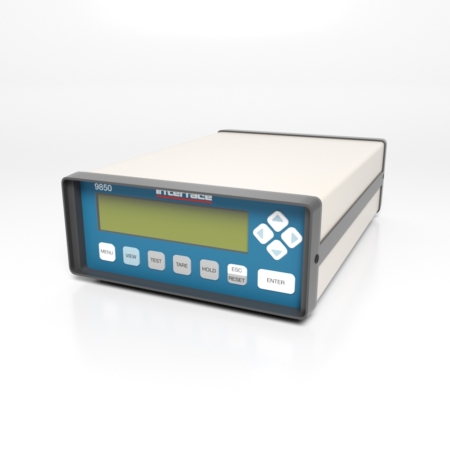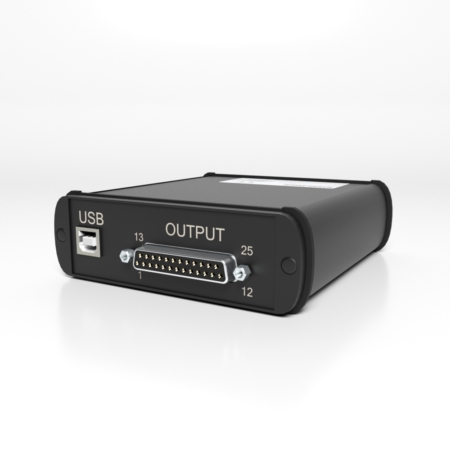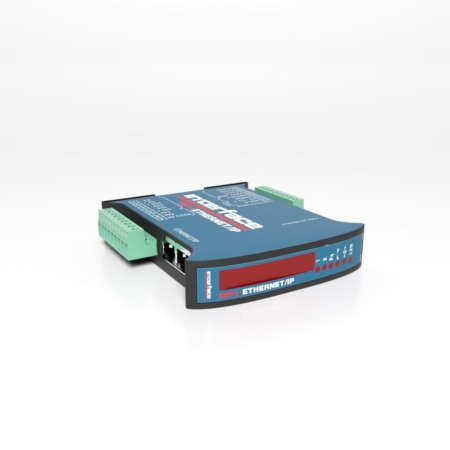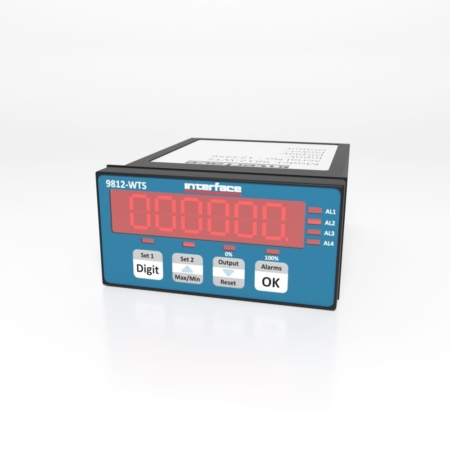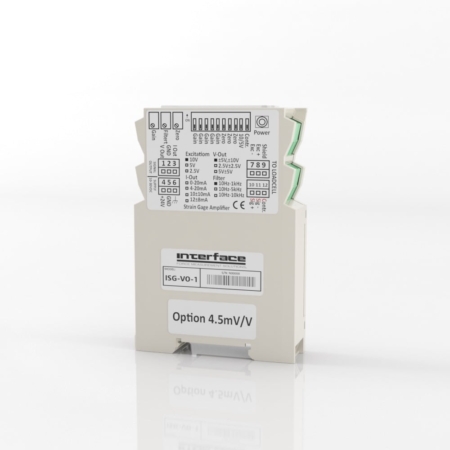| Model 9850 Torque & Load Cell Digital Indicator, Single Channel AC mV/V and Power 90-250 VAC |
9850-100-1 |
$ 3,100.00 |
| Model 9850 Torque & Load Cell Digital Indicator, Single Channel AC mV/V, Power 90-250 VAC with 4-20mA Output |
9850-101-1 |
$ 3,315.00 |
| Model 9850 Torque & Load Cell Digital Indicator, Dual Channel, Channel 1 = AC mV/V, Channel 2 AC mV/V and Power 90-250 VAC |
9850-110-1 |
$ 3,870.00 |
| Model 9850 Torque & Load Cell Digital Indicator, Dual Channel, Channel 1 = AC mV/V, Channel 2 =AC mV/V, Power 90-250 VAC with 4-20mA Output |
9850-111-1 |
$ 4,250.00 |
| Model 9850 Torque & Load Cell Digital Indicator, Dual Channel, Channel 1 =AC mV/V, Channel 2 =Frequency and Power 90-250 VAC |
9850-120-1 |
$ 4,000.00 |
| Model 9850 Torque & Load Cell Digital Indicator, Dual Channel, Channel 1 = AC mV/V, Channel 2 = Frequency, Power 90-250 VAC with 4-20mA Output |
9850-121-1 |
$ 4,220.00 |
| Model 9850 Torque & Load Cell Digital Indicator, Dual Channel, Channel 1 = AC mV/V, Channel 2 = LVDT and Power 90-250 VAC |
9850-140-1 |
$ 3,985.00 |
| Model 9850 Torque & Load Cell Digital Indicator, Single Channel VDC and Power 90-250 VAC |
9850-300-1 |
$ 3,100.00 |
| Model 9850 Torque & Load Cell Digital Indicator, Single Channel VDC, Power 90-250 VAC with 4-20mA Output |
9850-301-1 |
$ 3,315.00 |
| Model 9850 Torque & Load Cell Digital Indicator, Dual Channel, Channel 1 = VDC, Channel 2 = Frequency and Power 90-250 VAC |
9850-320-1 |
$ 4,070.00 |
| Model 9850 Torque & Load Cell Digital Indicator, Dual Channel, Channel 1 = VDC, Channel 2 = Frequency, Power 90-250 VAC with 4-20mA Output |
9850-321-1 |
$ 4,285.00 |
| Model 9850 Torque & Load Cell Digital Indicator, Dual Channel, Channel 1 =VDC, Channel 2 = VDC and Power 90-250 VAC |
9850-330-1 |
$ 3,675.00 |
| Model 9850 Torque & Load Cell Digital Indicator, Dual Channel, Channel 1 = VDC, Channel 2 = VDC, Power 90-250 VAC with 4-20mA Output |
9850-331-1 |
$ 3,885.00 |
| Model 9850 Torque & Load Cell Digital Indicator, Dual Channel, Channel 1 = VDC, Channel 2 = LVDT and Power 90-250 VAC |
9850-340-1 |
$ 3,885.00 |
| Model 9850 Torque & Load Cell Digital Indicator, Dual Channel, Channel 1 = VDC, Channel 2 = Encoder and Power 90-250 VAC |
9850-350-1 |
$ 4,825.00 |
| Model 9850 Torque & Load Cell Digital Indicator, Single Channel DC mV/V and Power 90-250 VAC |
9850-800-1 |
$ 4,465.00 |
| Model 9850 Torque & Load Cell Digital Indicator, Single Channel DC mV/V, Power 90-250 VAC with 4-20mA Output |
9850-801-1 |
$ 4,675.00 |
| Model 9850 Torque & Load Cell Digital Indicator, Dual Channel, Channel 1 = DC mV/V, Channel 2 =Frequency and Power 90-250 VAC |
9850-820-1 |
$ 4,285.00 |
| Model 9850 Torque & Load Cell Digital Indicator, Dual Channel, Channel 1 = DC mV/V, Channel 2 = Frequency, Power 90-250 VAC with 4-20mA Output |
9850-821-1 |
$ 4,485.00 |
| Model 9850 Torque & Load Cell Digital Indicator, Dual Channel, Channel 1 = DC mV/V, Channel 2 = LVDT and Power 90-250 VAC |
9850-840-1 |
$ 5,015.00 |
| Model 9850 Torque & Load Cell Digital Indicator, Dual Channel, Channel 1 = DC mV/V, Channel 2 = Encoder and Power 90-250 VAC |
9850-850-1 |
$ 5,215.00 |
| Model 9850 Torque & Load Cell Digital Indicator, Dual Channel, Channel 1 = DC mV/V, Channel 2 = DC mV/V and Power 90-250 VAC |
9850-880-1 |
$ 4,285.00 |
| Model 9850 Torque & Load Cell Digital Indicator, Dual Channel, Channel 1 = DC mV/V, Channel 2 = DC mV/V, Power 90-250 VAC with 4-20mA Output |
9850-881-1 |
$ 4,485.00 |
